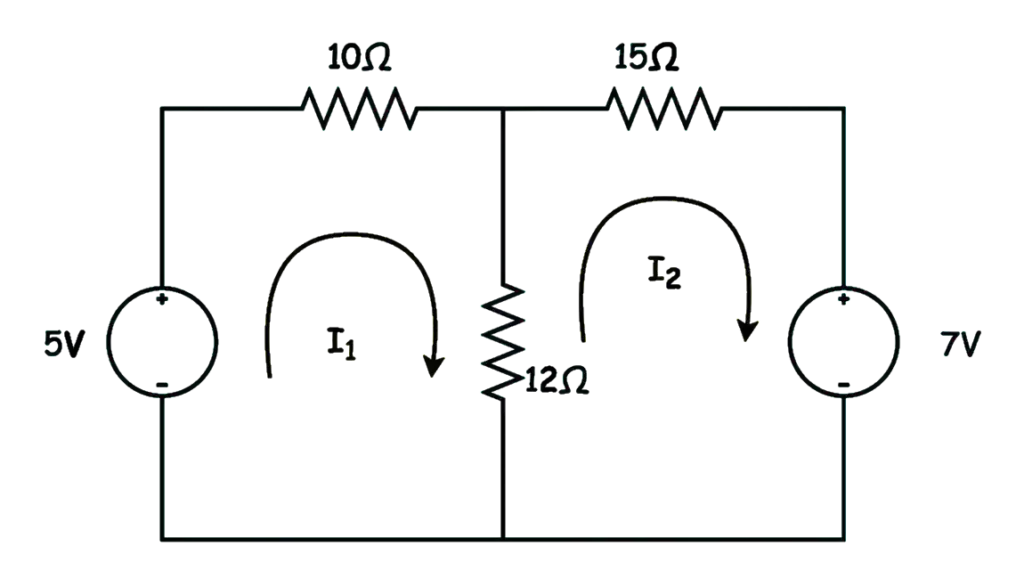The study of Network Theory starts with the fundamentals like node, loop, mesh, etc. Loop current and Branch current are among such fundamentals.
Many students get confused while writing the current for the branch between the two meshes.
But not now! Let’s see what exactly is the difference between loop and branch current.
What is mean by Loop Current and Branch Current ?
While solving the network problems you need to find loop current and branch current . In this blog, we will explore the differences between loop current and branch current in a network and their significance in the analysis of electrical circuits.
First of all let us see the definations of loop current and Branch current.
Loop Current :- The total current flowing through a closed loop circuit is called as loop current.
It is generally called as hypothetical current through the loop, because we assume that the loop current is flowing in the circuit while applying the Kirchoff’s law. Practically, it does not flow in the circuit.
Branch Current :- The current flowing through a specific branch or path of a circuit, is called as a Branch Current.
It is the actual current which flows in the circuit. In the branches of a network, there may be capacitor, inductor or resistor , so the actual current flowing through this elements in the branches of the circuit is called as Branch current.
This is the simple definations of the loop current and branch current.
Now, Let us understand the difference between branch current and loop current in detail.
Consider the network below,

The network consists of resistor and voltage sources . The current which is marked as I1 and I2 is called as the loop current. This is imaginary current, it does not actually flows in the circuit. It is imagined by us.

Similarly, the current Ia, Ib and Ic is called as branch current. We can see that the branch current Ia is flowing through the 5 V voltage source and the 10 \Omega resistor.
Ib is the current flowing through the 12 \Omega resistance . Ic is flowing through 15 \Omega resistance .
Now, let us try to establish the relation between the loop current and the branch current.
We can say that Ia=I1 , as it is flowing in the branch 1. Similarly Ic = I2
But , here Ib = I1 – I2 , because this branch separates two meshes so, it will consists of both the loop current . The left hand loop experiencing the current I1 and the right hand side loop is experiencing the current I2.
As the direction of both the current is opposite so, we have to take the difference between I1 and I2.
This is the relation between loop current and branch current.
Understanding the differences between loop current and branch current is essential in analyzing circuit behavior and optimizing circuit design.
By taking into account these parameters, engineers and designers can accurately predict circuit performance, identify potential issues, and implement solutions that improve circuit efficiency and reliability.
Hope, so this article has made the concept of loop current and branch current cleared to you.
Do not forget to check our Awesome GATE courses.



